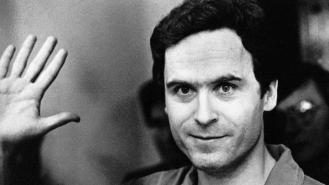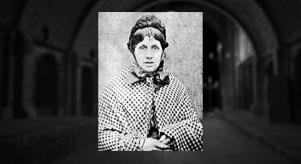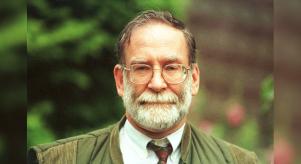
The scariest television interviews with infamous serial killers
People around the world have a fascination with true crime, especially serial killers. There’s just something to do with learning about the absolute worst of humanity and seeing them brought to justice that intrigues the average person. However, eyebrows are sometimes raised when serial killers get the opportunity to speak in front of a camera and tell their side of the story.
Is it a unique way to analyse the mind of these individuals, or does it simply give them the attention and recognition they crave? Here are five serial killers who gave chilling television interviews.
Dr. Harold Shipman
Convicted of murdering 15 people in 2000, it is believed that Dr. Harold Shipman may have been responsible for as many as 230 killings between 1975 and 1998. Some estimations even put this figure as high as 450. He is widely regarded as the most prolific serial killer, that we know of, in modern history.
The nature of his crimes, artificially diagnosing susceptible, trusting, victims with an ailment, and then injecting them with a lethal amount of diamorphine, makes Shipman an almost incongruous figure on this list. However, just because there are no gory, salacious details, this was cold-blooded, calculated murder at its most cynical. Shipman enjoyed playing God, taking advantage of a community that offered him nothing but unfettered trust and respect.
Below we have clips from two short television interviews with Shipman. The first shows him dispassionately discussing, ironically, care in the community in 1982 for a British TV show when he was already well into his killing spree. The other is outside his home in 1998, just before he was arrested and charged for mass murder, yet there he is carrying on as if magnanimously pardoning a subordinate journalist for stepping on his begonias.
Dennis Nilsen
If Shipman is the UK’s most prolific killer, Dennis Nilsen is perhaps the most notorious. This is in no small part due to the particularly gruesome method he treated his victims’ remains. Between 1978 and 1983, Nilsen killed and dismembered at least 12 vulnerable young men in a case that has depressing similarities with that of Stephen Port over three decades later.
Nilsen mainly targeted homosexual or homeless victims, who were shunned by the media and didn’t get the recognition that they deserved at the time. In contrast, images of Nilsen who, on the surface at least, cut a paradoxically conciliatory figure.
The title of Brian Master’s bestselling, ‘Killing for Company: Story of a Man Addicted to Murder', isn’t just sensationalist, it elicits a degree of pathos while suggesting a non-complicit motive. However, the following interview from January 1993 presents a very different version of Nilsen.
This sense of arrogance seems to be a common theme when it comes to serial killers on camera. Nilsen's enjoying his own position of authority, as is Shipman as he pompously imparts his expertise or snobbishly addresses the journalist. It’s worth noting that, when questioned by the police about his crimes, Shipman yawned throughout and shut his eyes when asked to look at the photographs of victims.
Jeffrey Dahmer
There is a similar conceitedness in the interviews of Jeffrey Dahmer, but over in the US, the media seems more at ease in allowing the perpetrators of horrific crimes to appear on television. For example, government lawyers representing the Home Office intervened to prevent the full four hours of Dennis Nilsen’s interview from being broadcast, eventually allowing just four minutes instead.
In virtually all of his TV interviews, Dahmer appears articulate, calm, and smart. However, that fundamental sense of aloofness, of not being able to attach himself to the suffering of others, has disturbing similarities with all the footage featured in this article. All the interviewees seem to enjoy having a captive audience as they talk. There is something almost didactic about the way they speak as if imparting some gilded knowledge to, we, the humble unenlightened.
Nilsen and Dahmer seem to be particularly enjoying the experience of re-living their crimes and, at times, appear on the verge of bursting into laughter. It’s certainly worth noting that the motives and crimes of Nilsen and Dahmer are gravely similar too. Coincidentally, both interviews were conducted within months of each other.
John Wayne Gacy
Like Nilsen and Dahmer, John Wayne Gacy preyed on vulnerable young men and children. Gacy displays some of the same dead-eyed imperiousness from behind his desk in a series of TV interviews broadcast in 1992. But Gacy is inconsistent. At times he appears naïve and, in places, he seems at odds with his serial killer sobriquet.
At the time of filming, Gacy had retracted an earlier confession and was now clumsily extolling his innocence some thirteen years later. He claimed he was an upstanding member of his community, a family man who didn’t hit his kids, even berating the parents of the victims for letting them down. In one extraordinary scene, which features in the clip below, the reporter passes Gacy his shoelace so Gacy can demonstrate how to apply a tourniquet, the method Gacy used to kill his victims before burying them in the crawl space under his home. “You’re in trouble now!”, Gacy jokes. The reporter unexpectedly laughs along before Gacy continues with a grin, “aren’t you afraid sitting that close?”
Of all the interviews on this page, Gacy’s are the ones that catch you out. There are moments when he appears to be almost likable, which is unsettling, to say the least.
Ted Bundy
In contrast to Gacy, Ted Bundy was articulate, intelligent, and able to express, at least a version of himself, with eloquence wrapped in a self-assured arrogance. Bundy, the epitome of a psychopath, was typically charismatic too, even the judge that sentenced Bundy to death emotionally added, “take care of yourself, I don’t have any animosity towards you, I wanted you to know that”. Factor in those all-American good looks, Bundy charmed everyone, especially the US media, into servitude.
When watching back Bundy's old television interviews, it can be hard to remember that he raped, murdered, and mutilated at least thirty women and children before playing with their corpses and body parts, weeks after the act. The below footage, from 1989, was recorded the day before Bundy’s execution, his hubris is off the chart, the pompous, cod-scientific summary of himself, by means of justifying what he’s done, is aided and abetted by the passive media that feeds him questions, but the game is over.
Bundy’s pedestal crumbles before our eyes, his mendaciousness spills out when discussing the horrific murder of 12-year-old Kimberly Leach, by the time he claims he’s found religion, hours before he was executed, he’s had enough.









